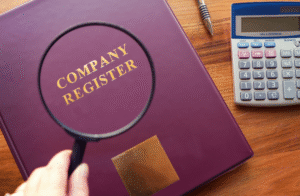You’ll probably have to issue shares at some point during your startup, especially if you’re needing to raise money. This simple six-step tutorial will help you understand how to issue shares in Singapore and ensure that you’re prepared when you want to start raising funds because we know the procedure can be intimidating.
In several circumstances, such as entering a joint venture, taking on new investors, or acquiring new business partners, a corporation may allot shares. We’ll go over some things you should know about the share allotment in this article.
Share Allotment in Singapore: What Does It Mean?
The issuing of new shares to existing shareholders, third parties, or non-existing members is known as the share allotment. If a company’s constitution gives its directors the authority to do so, they may only distribute shares of the company’s capital with the members’ consent per section 161 of the Companies Act.
Issuing shares for your company is a terrific approach to raising investment funds and enabling the growth of your firm. Giving your employees a stake in your company is also one way to motivate them to work harder.
Factors to Take Into Account When Issuing Shares
When deciding whether to issue new shares, there are several different factors to take into account:
1. Consider the Various Categories of Shares
To begin with, note that there are several types of shares you can issue, including common shares, alphabet shares, management shares, and even preference shares.
Ordinary Shares
Ordinary shareowners each have an equal number of votes and dividend rights based on their shareholding. On the other hand, ordinary shares can be split into alphabet shares with various rights of their own (e.g. Class A or Class B ordinary shares).
Shares with Various Rights
Examples of shares having various rights include shares with higher or lower voting rights, preferential dividend rights, rights of redemption such as the ability to repurchase shares from the corporation, and management rights such as the right to appoint a board member.
You would have to carefully consider the kind of shares your company wants to issue.
2. Ratify a Board Decision
A board resolution is an official record kept for the company’s files. Any significant business issue is eligible for discussion. It is established to guarantee that the board of directors have their decisions in writing and that they are in agreement on the matter being discussed.
In the majority of circumstances, you should get your board of directors to approve a board resolution before you begin issuing company shares. This document should be one that grants approval to the conditions of the new investment and the share issuing.
The approval should be made contingent upon the shareholders’ consent, as their consent is required by law for the corporation to start issuing shares.
A proposal for shareholder approval is frequently included in board resolutions, and as we’ll see below, this can be accomplished through a shareholder resolution or shareholder meeting.
What is then the procedure for a shareholder resolution or shareholder meeting? In the next stage, we’ll explain.
3. Get Your Shareholders’ Consent
If you already have the board’s blessings, it’s time to submit a shareholder resolution to obtain the consent of your shareholders.
You can pass a shareholder resolution in one of two ways:
- The first and simpler method is: Provide a draft written resolution for your shareholders to sign as their consent.
- The alternative is: Call a meeting of shareholders and ask them to cast a vote on whether the corporation should issue shares. You will require the consent of shareholders owning more than 50% of the total voting rights in either situation.
Let’s take a closer look at each procedure.
Adopt a Formal Resolution
Because it is much simpler to pass a resolution in writing than to call a shareholders’ meeting, the majority of businesses will choose to do so. The board simply drafts and distributes a written resolution specifying the number of shares to be issued.
If the shareholders consent to the share issuance, they may sign the resolution and send a copy back to the business.
You can start to issue shares as soon as the necessary number of shareholders agree to the resolution. Your company secretary can help you in obtaining shareholder approval through a written resolution.
Adopt a Measure at a Shareholders’ Meeting
Instead of a written resolution, a shareholders’ meeting could be called to pass the resolution.
To do this, you must:
- Assemble your investors.
- Describe the new shares.
- Solicit a vote from your shareholders.
- Include results in the meeting minutes.
Some businesses may decide to hold a shareholders’ meeting because it gives their shareholders a venue to talk about the investment.
Your business must follow several formalities to have a shareholders’ meeting. The resolutions adopted at the meeting can be ruled void if these requirements aren’t followed exactly.
You should be aware of the following before holding a shareholders’ meeting:
- Inform your shareholders: All of your shareholders must receive written notice of the meeting at least 14 days in advance.
- Include this information in the notice: The meeting’s date, time, and location, as well as the resolution that will be discussed during the meeting (i.e., authorising the issuance of shares). The right of the members to designate a proxy to attend and cast a vote at the meeting should also be made clear in the notice.
- Know the quorum for your meeting: The minimum number of shareholders present for a meeting to be valid is known as a quorum. A quorum for a meeting is two shareholders or more in attendance. But, if there is only one shareholder, then just having that shareholder present is sufficient (but it would be vastly easier to get that sole shareholder to pass a written resolution).
What Happens When the Shareholders’ Consent Is Obtained?
Depending on the conditions surrounding the firm’s share issuance, the company should decide on what they want to do next. Below, we examine two situations:
- A joint venture partnership is to be formed by the companies.
- A fresh investor to receive shares.
Partnership in a Joint Venture
The ownership of the business will invariably alter when it becomes a joint venture partnership and is normally distributed per the liability and duty that have been established.
The reason businesses choose to allocate new shares over just transferring the appropriate share allocation to the new joint partner is that the existing share count is either insufficient or an unsuitable odd number.
As a matter of appropriate bookkeeping, all businesses should generally pass a Directors’ Resolution in Writing (DRIW) before entering into agreements. This DRIW can also consider and give approval for the following:
- Appointment of a corporate representative to sign the contract and negotiate all of its conditions on the company’s behalf; and
- The selection of a new director (e.g. the joint venture partner may wish to be a director)
For future reference or the auditors’ reference when they examine the company’s books during their annual statutory audit, the agreement to participate in the joint venture partnership should also be affixed to the stated DRIW.
Please be aware that if a new director is appointed, the appropriate filing with ACRA must be completed in order to inform ACRA of the new director. The company secretary will also have to draft Form 45, which the director must sign to confirm his agreement to assume his duties as a director of the company.
The Fresh Investor
A new investor may ask for a specific number of shares to be allocated to him or her in exchange for the investment made or as partial payment.
This is a well-liked method for investors to keep track of their investments and maintain some control and authority over decision-making, especially for many private venture capital firms. The investor will frequently ask to be added to the board of directors as well.
According to the terms and conditions agreed upon between the investor and the firm, the company may or may not nominate a new director if it is obliged to enter into an investment agreement. It should also pass a DRIW to accept any agreement.
4. Filling of Allotment of Shares Documentation with ACRA
Although the filing of an allocation of shares with ACRA has already been briefly explained above, considering its significance and potential effects on the firm, it most definitely merits a separate section that goes into more detail.
Bizfile+, an ACRA internet platform, is where businesses can submit practically all of their filings and applications. Hence, to inform ACRA of the share allotment, one has to use Bizfile+.
ACRA limits access to a company’s Bizfile+ account to prevent unauthorised submissions, and only the firm’s officers — including its directors and company secretary — are permitted to make submissions on the company’s behalf.
Also, to use ACRA’s electronic portal, just like with all other government agencies like the Ministry of Manpower (“MOM”) or Singapore Customs, a SingPass must be in your possession. Each person has a SingPass, which gives them access to numerous government organisations’ electronic services.
Foreigners who have Employment Passes, Personalised Employment Passes, EntrePass, S-Pass, Dependent Pass, Long-Term Visit Pass-Plus, and certain Work Permit Holders may also apply to receive a SingPass. All Singapore citizens and permanent residents will have a SingPass.
The corporation would have to declare the following information as part of the filing for the issuance of shares:
- Number of shares to be allotted.
- Amount (if any) paid or deemed to have been delivered at the time each share was allocated.
- Sum (if any) outstanding on each share mentioned in the previous point.
- The class of shares that each share in the allocation belongs to, assuming there are various classes of shares.
- Each member’s full name, identification (NRIC or passport number), nationality, address, and the quantity and class of shares they own are all required.
Any mistakes made in the lodgments submitted to ACRA (also known as the Registrar), especially when it comes to shares, cannot be easily rectified. A, Under Section 32(1) of the Companies (Filing of Papers) Regulations, a corporation will not be allowed to just file a notification to correct errors in the following categories:
- Information on a charge.
- Specifics of the share capital of the company.
Instead, the business must first get a court order from the judge authorising the register correction and then hand over the order to ACRA. Additionally, no law in place will compensate those who lose money as a result of such incorrect entries.
Therefore, it is the responsibility of the company and its shareholders to guarantee that all dépôts of the company’s share capital are validly signed and lawfully executed.
As previously said, when done properly, the distribution of shares can safeguard investors, funds, and companies from problems relating to shareholding structure. To comply with Singapore law, corporations should maintain best practices when allocating shares to all stakeholders.
Your company’s electronic register of members (the “EROM”) will be automatically updated to reflect the new shareholders and revised shareholdings once you have successfully filed a return of allotment.
Make sure to file the return of allotment on a date that you and your new shareholders have agreed upon. The date that the issuance will be recorded on the EROM is the same as the date that you file the return of allotment.
5. Produce Share Certificates
The new shareholders can now get share certificates, which will serve as documentation of their ownership along with the EROM. The certificates must include the firm’s name, the class of shares, the number of shares each certificate represents, and whether the shares have been completely paid up.
6. Share Issuing
You are ready to issue your new shares once you have finished the aforementioned tasks. The conditions outlined here are in keeping with the acceptable legal standards. Yet, they are bound by the provisions of your company’s charter and shareholders agreement (if any). Therefore make sure to look over those documents to determine whether there are any further conditions on the issuance of shares, shareholders’ meetings, and approvals in general.
Before issuing more shares, you’ll probably need to meet any pre-emption and investor permission requirements if you’ve previously raised funds. When in doubt, you should get expert legal counsel.
The Conclusion
A corporation should make every effort to ensure that all rights and obligations are laid out in the company constitution or a shareholder agreement when issuing shares with various rights. Future legal issues can be avoided as a result of this.
Engaging a corporate secretarial agency may be useful if you need guidance and help issuing company shares. They would guarantee the share allotment is done smoothly and as per the statutory requirements, saving you a lot of time and money.




